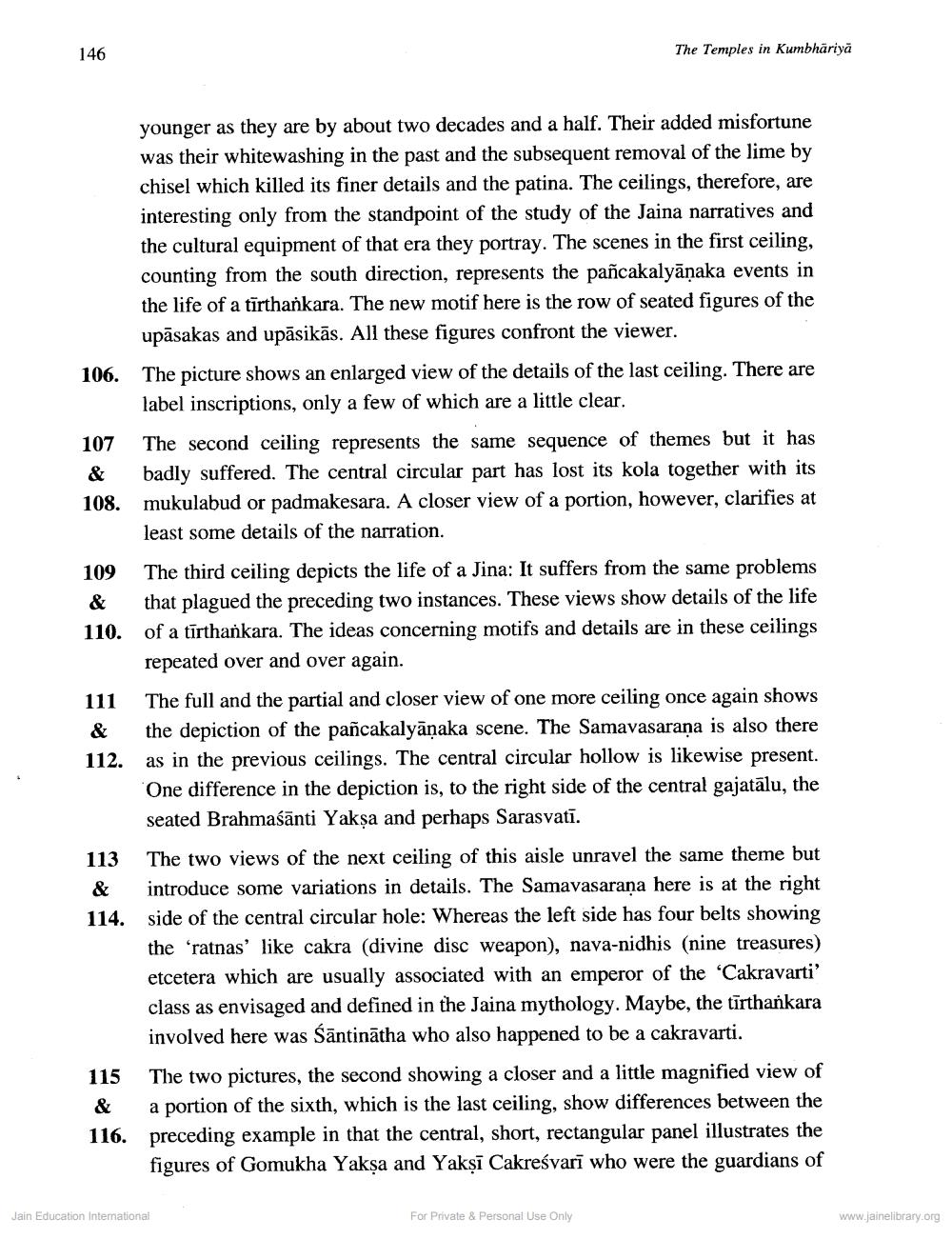________________
146
The Temples in Kumbhariya
younger as they are by about two decades and a half. Their added misfortune was their whitewashing in the past and the subsequent removal of the lime by chisel which killed its finer details and the patina. The ceilings, therefore, are interesting only from the standpoint of the study of the Jaina narratives and the cultural equipment of that era they portray. The scenes in the first ceiling, counting from the south direction, represents the pañcakalyāṇaka events in the life of a tīrthankara. The new motif here is the row of seated figures of the
upāsakas and upāsikās. All these figures confront the viewer. 106. The picture shows an enlarged view of the details of the last ceiling. There are
label inscriptions, only a few of which are a little clear. 107 The second ceiling represents the same sequence of themes but it has & badly suffered. The central circular part has lost its kola together with its 108. mukulabud or padmakesara. A closer view of a portion, however, clarifies at
least some details of the narration. 109 The third ceiling depicts the life of a Jina: It suffers from the same problems & that plagued the preceding two instances. These views show details of the life 110. of a tīrthankara. The ideas concerning motifs and details are in these ceilings
repeated over and over again. 111 The full and the partial and closer view of one more ceiling once again shows
& the depiction of the pañcakalyānaka scene. The Samavasarana is also there 112. as in the previous ceilings. The central circular hollow is likewise present.
One difference in the depiction is, to the right side of the central gajatālu, the
seated Brahmaśānti Yakșa and perhaps Sarasvati. 113 The two views of the next ceiling of this aisle unravel the same theme but
introduce some variations in details. The Samavasarana here is at the right 114. side of the central circular hole: Whereas the left side has four belts showing
the ‘ratnas' like cakra (divine disc weapon), nava-nidhis (nine treasures) etcetera which are usually associated with an emperor of the 'Cakravarti' class as envisaged and defined in the Jaina mythology. Maybe, the tīrthankara involved here was Šāntinātha who also happened to be a cakravarti.
115 The two pictures, the second showing a closer and a little magnified view of
& a portion of the sixth, which is the last ceiling, show differences between the 116. preceding example in that the central, short, rectangular panel illustrates the
figures of Gomukha Yaksa and Yaksī Cakreśvarī who were the guardians of
Jain Education International
For Private & Personal Use Only
www.jainelibrary.org




